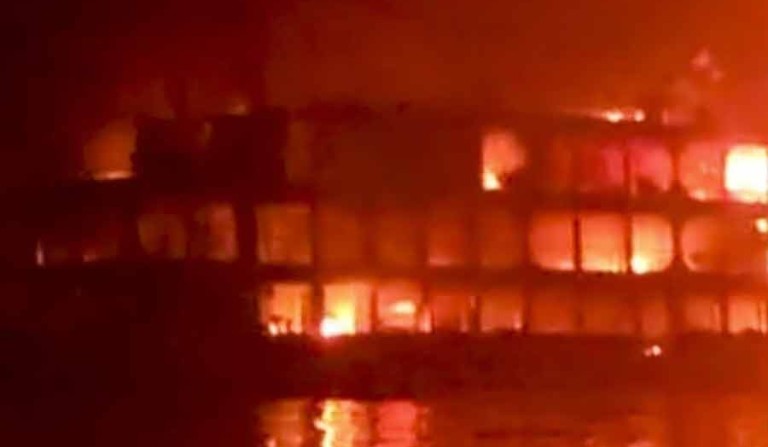
Protecting rivers to ensure development
Monirul Haque Rony
Published:02 Jan 2022, 12:46 PM

Protecting rivers to ensure development
Bangladesh is a riverine country. Numerous rivers make a network that crisscrosses the country. There are also thousands of haors, baors, canals, reservoirs, etc. scattered in different parts of the country. These have made the nature of Bangladesh diverse, attractive and enchanting. Countless songs, poems, stories, novels, plays, movies have been made about rivers; which have embellished our history and tradition. The relationship of the river with our livelihood, economy and communication system is eternal. Riverine economic activity is also one of the driving forces of our economy. Millions of people depend on the river for their livelihood. But it is very unfortunate that our rivers today are losing their diversity because of excessive pollution and occupation. These are suffering from a crisis of existence today. The rivers are gradually disappearing. About 100 rivers have disappeared in the last 50 years. A hundred more rivers are dying due to illegal grabbing.
The condition of all the rivers of the country is almost the same. However, the condition of the rivers along the big urban areas is more fragile. Especially, the level of pollution and grabbing of the rivers around Dhaka such as Buriganga, Turag, Banshi, Balu, Dhaleshwari and Shitalakshya is unimaginable. These are almost dead today. They are losing their navigability day by day and their water is becoming unusable due to extreme pollution. Rivers are becoming uninhabitable for fish and other aquatic life. At one time people used river water for daily activities including bathing. The rivers were sanctuaries for various aquatic animals and species of fish. As the biodiversity of the rivers is threatened due to excessive pollution and encroachment, people are also suffering from various diseases including skin and stomach ailments from using polluted water.
Environmental organisations and conscious groups often raise their voices and fight against river pollution and encroachment. Occupying the rivers is constantly going on using various tactics. Moreover, it is true that the national river protection commission and BIWTA sometimes take steps to evict illegal infrastructures along the rivers. But the moves get stuck with very little progress.
It is very important to get accurate statistics and exact location of our rivers before freeing the rivers from grabbing and contamination. According to the National River Protection Commission, the total number of rivers is more than 770. According to the Ministry of Shipping, the number is 496. The booklet 'Rivers of Bangladesh' published by the Water Development Board mentions 405 rivers. The matter is very worrying. If the actual number of rivers is not known, then it would be difficult to take proper steps to protect the rivers. That is why the High Court has recently issued a directive to give a full report on the list of all the rivers in the country, the list of the occupiers and the steps taken by the government within the next six months. The court's directive on river protection is appreciable. If the authorities concerned can carry out the work smoothly as directed by the court, there is no doubt that some meaningful actions can be taken to protect the rivers. Nevertheless, this directive of the court alone is not enough to protect the rivers. This is because the court had given many such instructions in the past, but there were delays in the implementation of the instructions. Therefore, far-reaching planning and joint and integrated initiatives are needed to save the rivers.
The factories set up along the river should be compelled to channel chemically treated waste through their own or central effluent treatment plant. It is imperative to make round-the-clock supervision to ensure that the polluted water from the factory does not enter the river in any way. The level of pollution will be greatly reduced if farmers are encouraged to use organic fertilisers without relying too much on chemical fertilisers and pesticides. The indiscriminate dumping of liquid and solid waste from the settlements along the riverbanks should be discouraged. Awareness campaigns can be carried out through miking, leaflets, roadshows, short films etc. to create awareness about river protection. If necessary, we need to include the subject of river protection in our education curriculum. It will be possible to prevent river pollution and encroachment if strict punishment of the violators is ensured by properly enforcing the existing water (prevention and pollution) law.
No development will be beneficial and sustainable by destroying the rivers. Development in its true sense will be possible only by protecting the rivers.
* Monirul Haque Rony is a Lecturer at the Department of Social Work Savar Government College, Savar, Dhaka